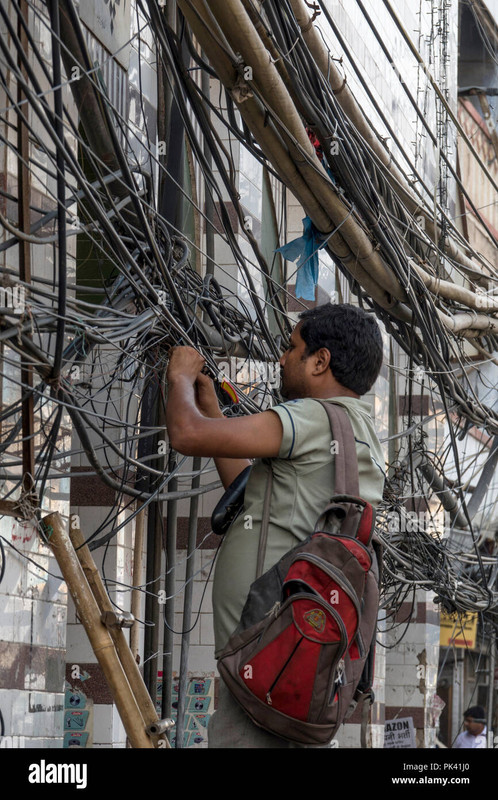
It seems that EVs need to be stored in a fireproof space.
India has epically bad A/C.
Yes, but if these scooters saved just one tree...
Were they the 12 volt?
Tragic, in any event.
BUT, Indias carbon footprint is down from a size 11 to a 10 thanks to these scooters!
The future is going to be fun. I have seen 3 tesla fires in the last year, 2 just last week. Nothing like having exploding E trinkets everywhere, especially a scooter in your house.

Many of those bikes appear to have exhaust systems. Are they hybrids?
Ticking Time-bombs
The batteries in the charging station will charge-up during off-peak hours in order to save money.

I know New York City has had a rash of these things catch fire. Instead of just a simple fire turned into a big hazmat situation.
Coming soon to an E scooter near you.
Electric skooters are evil.
A plot to cut back on the population? Think how many houses have garages that are attached to the house. Some garages right under bedrooms. Charging will probably be done late evening or overnight. People sleeping.
Electric scooters come stock with heaters who knew.
Safe and effective...
wtf...get texass gator on the case
Scooters? What I see are more EVs going up in smoke and killing people. This time in India. Red Badger >> Please add this to your Tesla fiery death toll count. Because electric scooters are the Tesla equivalent there.
Lithium-Ion Batteries are a nightmare for fire fighters.
Best guidance is NFPA855 for charging and saftey.
While operating routinely, everything is fine. It’s the abnormal events which are killers.
Look at the MacMicken Fire incident near Phoenix from 2019
https://commercialsolarguy.com/a-lithium-ion-battery-burnt-four-firefighters-were-knocked-unconscious-a-timeline-and-recommendations/
Happened on a 2MW BESS, but only involved 1-3 modules.
Battery cells were maintained by professionals and less than 2 yrs old.
One battery cell had a dendrite growth between the cathode and anode tape, with the tip shorting out one cell. Cell short circuited and began to outgas, then went into thermal runaway, cascading failures to adjacent cells.
Container system sensed a rise in temperature from 70s to 90s, then activated, opened all circuits, closed all ventilation, activated a clean agent system, but the solid chemistry exotheric reaction couldn’t be stopped.
Went on for a couple of hours, first responders donned SCBA, and sensed the area IR, found the point of thermal source. Waited for it to die out, then opened to make sure it could be made safe. Made about 4 trips in and out of the Container. On the last trip, they heard a pop, then a deflagration event so quick, the flames shot about 74 ft ;atterally and 20 ft high out the door. It propelled the Fire Chief through and out the bottom of a chain link fence, landing him in a burning bush about 73 ft away, and crushed all their SCBA facemasks. All 4 firefighters were hospitalized, but not died.
NFPA 855 now requires water sprinkling, but still only really triggers at 20kWh ESS systems. 1kWh Li-Ion systems tend to fall under UL listed systems and allowed in the IFC, IRC, and NFPA855, even in 1 and 2 family dwellings, except in their living and sleeping areas. Only require 5 ft standoff from doors and windows, if mounted outside the building and can be as large as 2 - 20kWh ESS EV Mobile systems.
Here’s the nightmare. Large cities and retailers pf the bikes and scooters, tend to have rental businesses set up, where users can rent and use the bike for the day, then come and switch bikes for a newly charged system.
The rental business frequently subcontracts out to locals and pays by the battery for them to recharge them. When the companies recharge, they may have a van or truck running around swapping the batteries and returning to an underground parking garage with 60 batteries on board, plug large elec conductors into their vans, and recharge at night in the garage, with several other vans in parallel.
Codes really aren’t prohibiting this.
For Li-Ion batteries when they go into thermal runaway, they can jump from 200deg C to 300deg C in 1 sec, and their flame temps can reach 1000-1500deg C. So they will melt most items beneath them, except concrete.
One cell can generate 5cuft of outgas smoke, which is highly toxic and explosive/flammable. (.5 ppm can cause permanent lung damage).
One fire in Belgium used 990,000 gal water to mitigate heat hazards to adjacent bldgs.
New codes, don’t allow firefighters nor tradesmen to enter the container once the Fire Alarm system has been activated. Must be all automatic, with documented destructive testing of a sample system and full commissioning.
FWIW, don’t use those tool batteries like a mallet.
<;^O